#rucervus duvaucelii
Explore tagged Tumblr posts
Text

Southern Swamp Deer | Yuwaraj Gurjar
#photo#cervidae#cervinae#rucervus#rucervus duvaucelii#rucervus duvaucelii branderi#barasingha#southern swamp deer#yuwaraj gurjar
9 notes
·
View notes
Text
Barasingha (Rucervus duvaucelii)
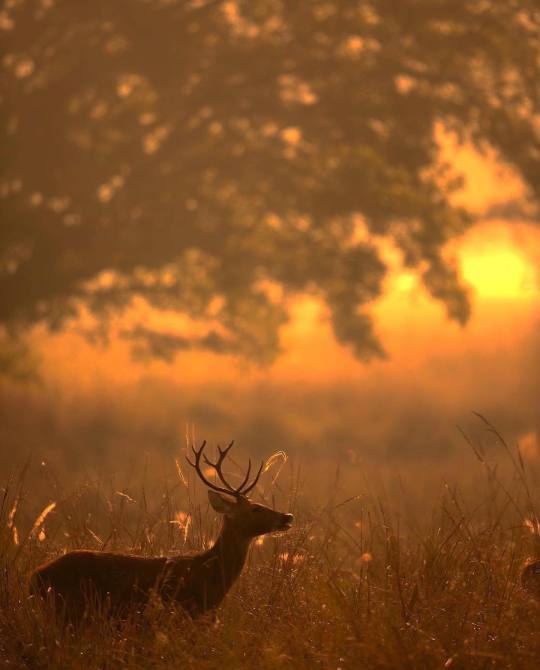
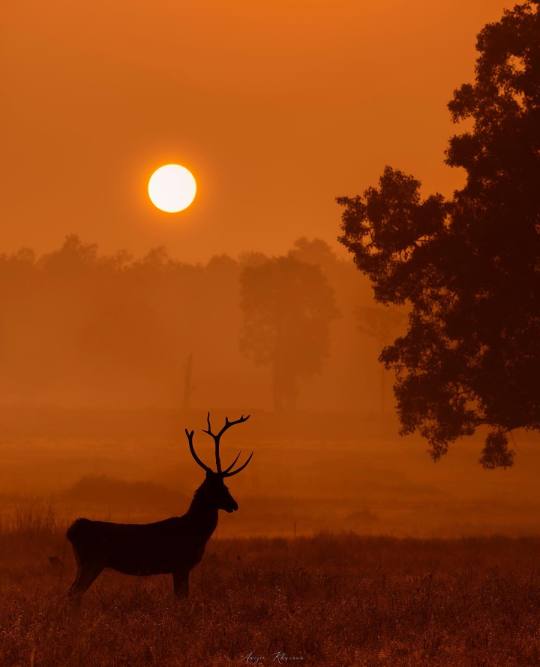
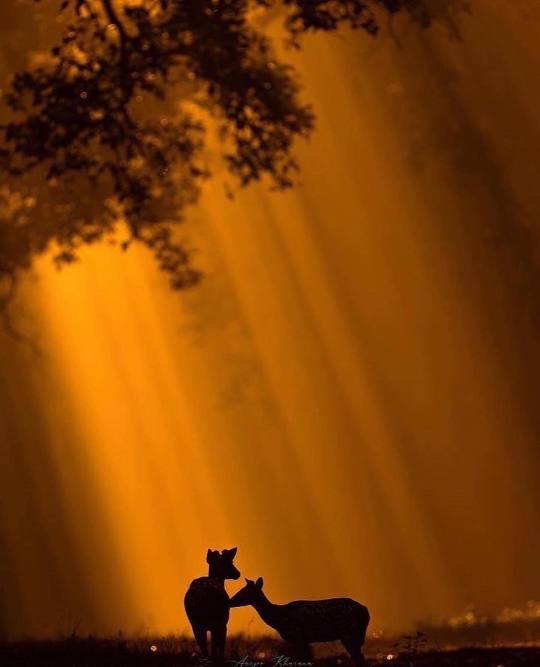
" Meanwhile in India " //© Aarzoo Khurana
228 notes
·
View notes
Text

Southern barasingha Rucervus duvaucelii branderi
Observed by sandeeprathore, CC BY-NC
40 notes
·
View notes
Text

The #barasingha (Rucervus duvaucelii), sometimes barasinghe, also known as the #swampdeer, is a deer species distributed in
2 notes
·
View notes
Text
@hookedhobbies I told you I would write a weird review of each deer species I've worked with the next time I was drinking, so here we go.
It is neither good nor coherent, but should give you some Vibes for each of them.
Eld's Deer - overall they were chill and didn't come super close while I was in the field. Except for one stupid little shit that thought all humans needed to die. I wish I could remember his name, but we always had to have one person on the lookout for him so the other could escape if needed. Cool little deer with a unique curve to their antlers, with a prominent brow tine.
Pere David's Deer - One of my favorite deer species I've worked with. Very strange creatures. Also known as the Milu - or creature of four parts (I believe the horse, ox, deer, and deer?) “The hooves of a cow but not a cow, the neck of a camel but not a camel, antlers of a deer but not a deer, the tail of a donkey but not a donkey.” per Wikipedia. They do look ungainly. When I was working with them we had a cow that was relentlessly harassed by the rest of the herd so we knocked her down for an exam and it turned out she had a really gnarly abortion that had partially mummified and was infected. Nothing prepares you for the smell of septic fetus as you're pulling a jaw bone out of a 400 lb deer.
Bactrian Deer - I actually don't remember a ton about these guys - we had a large herd in one of the several thousand acre pens, so I didn't see them a lot. Physically very similar to elk or red deer. They seemed fairly wild and majestic. There was one that had been orphaned and bottle raised that we unofficially called Bullet. Because we would likely have to shoot him one day to aggression. (Bottle raised large ungulates tend to uh. Not Be Normal.)
Sika Deer - don't remember much about them in general, just leaping out of an F150 at 15 miles per hour to catch a fawn that needed an ear tag. Relatively small sized deer, spotted, pretty cute.
White-Tailed Deer - Like if a labradoodle became a deer. I don't really mean that as a compliment. Not very smart, but friendly and loved being scratched. Delicious if properly seasoned.
Fallow Deer - head empty, but very friendly. Easily trainable with food. There is a feral population bearish where I live. We came upon them once while training some off track thoroughbreds. That was a ride.
Axis Deer - like the stag from Bambi in personality, but not in stature. Majestic, better than you, would not Deign to interact with a common human. Also flightly AF. Prone to stress, there was once a massacre.
Barasingha - my beloved. Gigantic, improbable ears. Made for living in swamps. Make very silly snort scream squeak noises. Gorgeous red orange coloring. EDIT I forgot to add in that I just fucking love their scientific name: Rucervus duvaucelii. It's fun to say.
Elk - probably my favorite. Forest guardian spirit, neither benevolent nor malevolent. Hold an intelligence that I did not see in the other deer (maybe the pere David's, but honestly they trended toward the eldritch). The girls I worked with were all trainable, but only if they saw the benefit to what we were doing. It helps that the oldest cow loved me and would follow me along the fence line if I was doing other work.
4 notes
·
View notes
Text
Barasingha (Rucervus duvaucelii)

95 notes
·
View notes
Text
Indian swamp deer, also known as the Barasingha (Rucervus duvaucelii), is a distinctive species of deer characterized by its unique antlers and robust build. Male swamp deer have striking, large antlers that can have up to 12 tines, although some can have more, giving the species its common name "Barasingha," which means "twelve-tined" in Hindi.

0 notes
Text
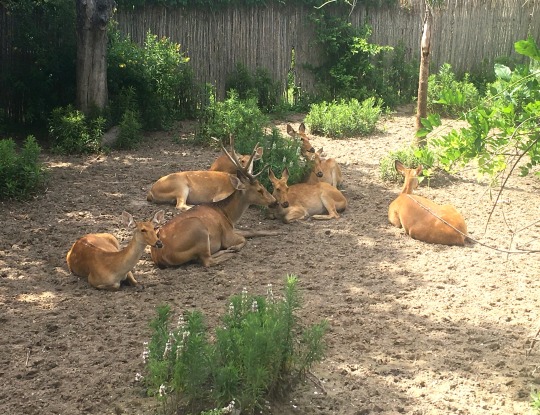
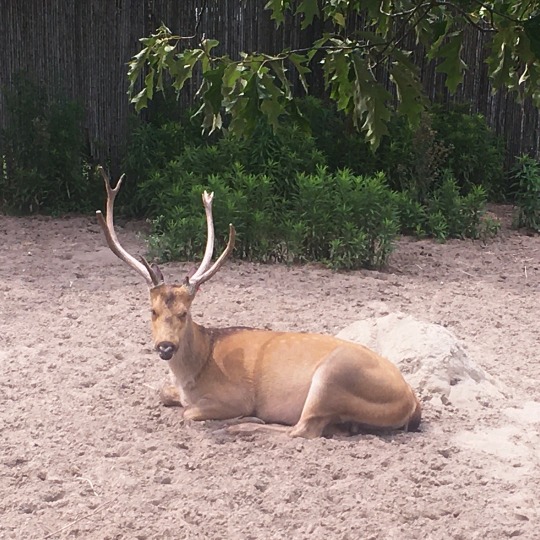
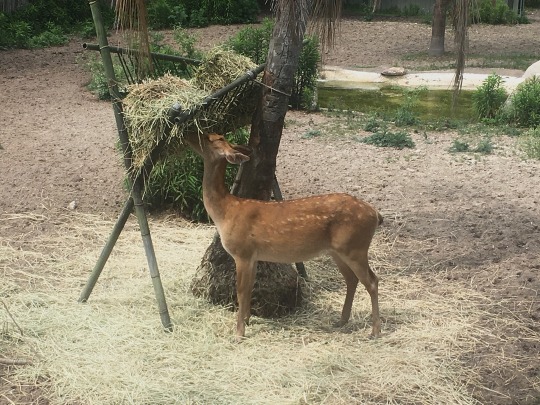
Barasingha Rucervus duvaucelii, a large Indian deer. Note the soft earth in their enclosure — barasingha are one of several semiaquatic deer species and are naturally adapted to walking on the yielding ground of swamps.
Audubon Zoo, May 2022
5 notes
·
View notes
Photo

Barasingha [Cervidae rucervus duvaucelii]
38 notes
·
View notes
Video
tumblr
how the tigress drag her food and protect it from crows.
this was a really video from kanha national forest india , where i visited on 20 nov. 2020.
tiger killed Rucervus duvaucelii (barasingha), which was only found in this forest , at that day world lost his swamp deer ( barasingha).
me and some other people saw this ......
QUOTES:-
LIFE IS VERY SMALL, WE NEVER KNOW WHEN IT’S END
SO LIVE YOUR LIFE AS YOU WANT .........
NO ONE JUDGE OR STOP YOU..
GO FOR IT ..
https://insiya05.tumblr.com/post/635729841415700480/how-the-tigress-drag-her-food-and-protect-it-from
5 notes
·
View notes
Text

Chital (Axis axis) display at the Field Museum. This moderately sized deer species is found across the Indian subcontinent and has been introduced to Australia and the United States. Chital are a vocal species and make bellowing and barking noises similar to elk. It’s closest relatives are the members of the genus Rucervus, which includes the barasingha (Rucervus duvaucelii) and extinct Schomburgk’s deer (Rucervus schomburgki).
105 notes
·
View notes
Photo

IN FRAME - Rucervus duvaucelii ( BARASINGHA) CLASSIFICATION - Kingdom: Animalia Phylum: Chordata Class: Mammalia Order: Artiodactyla Family: Cervidae Genus: Rucervus Species: R. duvaucelii Binomial name Rucervus duvaucelii (G. Cuvier, 1823 #wildlifephotography #animal_captures #splendid_animals #animalelite #earthfocus #wildlife #nature #naturephotography #macrophotography #macroworld #wildlifeplant #wildlifeonearth #netgeowild #natgeohub #discovery #bbcearth #animalplanet #indianwild #wildanimals #wild #TheZungle #netgeo #wildlife #photography #natural #barasingha #mammal #divercity #zoological #viral (at Nahargarh Biological & Zoological Park) https://www.instagram.com/p/CAQOeu8F2Ly/?igshid=nmt4bcpywc01
#wildlifephotography#animal_captures#splendid_animals#animalelite#earthfocus#wildlife#nature#naturephotography#macrophotography#macroworld#wildlifeplant#wildlifeonearth#netgeowild#natgeohub#discovery#bbcearth#animalplanet#indianwild#wildanimals#wild#thezungle#netgeo#photography#natural#barasingha#mammal#divercity#zoological#viral
0 notes
Photo

The barasingha (Rucervus duvaucelii syn. Cervus duvaucelii), also called swamp deer ... Barasingha is the state animal of the Indian states of #MadhyaPradesh and #UttarPradesh. © VIPs #animallovers #animalpolis #animalsofinstagram #igscwildlife #animales #exclusive_animals #wildlifephoto #wildlifeaddicts #wildlifephotography #animalworld #awesomeglobe #animalofinstagram #animalsmood #wildlifeonearth #wildlifeplanet #thecritterhaven #animalsaddict #planet_of_animals #wildlife_seekers #animal_in_world #incredibleindia #photographers_of_india #indiagram #storiesofindia #indiaclicks #sonyimages #sonyalpha #sonyalphasclub #sonyphotogallery #mptourism#photooftheday #naturehub #Nature #naturelover #landscape #igernature #animallovers #animalpolis #animalsofinstagram #igscwildlife #animales #exclusive_animals #wildlifephoto #wildlifeaddicts #wildlifephotography #animalworld #awesomeglobe #animalofinstagram #animalsmood #wildlifeonearth #wildlifeplanet #thecritterhaven #animalsaddict #planet_of_animals #wildlife_seekers #animal_in_world #incredibleindia #photographers_of_india #indiagram #storiesofindia #indiaclicks #sonyimages #sonyalpha #sonyalphasclub #sonyphotogallery #mptourism (at Madhya Pradesh) https://www.instagram.com/p/BnZdGmKHa2a/?utm_source=ig_tumblr_share&igshid=19xseew5qlzzn
#madhyapradesh#uttarpradesh#animallovers#animalpolis#animalsofinstagram#igscwildlife#animales#exclusive_animals#wildlifephoto#wildlifeaddicts#wildlifephotography#animalworld#awesomeglobe#animalofinstagram#animalsmood#wildlifeonearth#wildlifeplanet#thecritterhaven#animalsaddict#planet_of_animals#wildlife_seekers#animal_in_world#incredibleindia#photographers_of_india#indiagram#storiesofindia#indiaclicks#sonyimages#sonyalpha#sonyalphasclub
0 notes
Text

Southern barasingha Rucervus duvaucelii branderi
Observed by philbenstead, CC BY-NC
152 notes
·
View notes
Text
After exploring Nepal’s capital city, Kathmandu, and getting acquainted with the urban macaques, we decided to head south towards the jungle near the border of India. Tom and I enjoy the hustle and bustle of cities and all the culture and history that comes with it, but what we love most is being out in the wilderness. It was time to pay Nepal’s first national park a visit.
Chitwan National Park
Established in 1973, Chitwan National Park (चितवन राष्ट्रिय निकुञ्ज) was Nepal’s first national park.
The park is located in the subtropical Terai region of southern Nepal and covers an area of 932 km2 (360 sq mi) . It is a world heritage property, and also contains the Ramsar site, Beeshazari Tal, in its buffer zone.

Google Map of Location – Link here
A total of 68 species of mammals, 544 species of birds, 56 species of herpetofauna and 126 species of fish have been recorded in the park. The park is especially known for its one-horned rhinoceros (Rhinoceros unicornis), royal Bengal tiger (Panthera tigris tigris), and gharial crocodile (Gavialis gangeticus).
Getting There
We caught a bus from Kathmandu to Sauraha, a town just outside Chitwan National Park. We didn’t quite realise what an adventure that journey was going to be… Rickety old vehicles with no suspension on very rough roads, constant road works because of all the landslides and slips, vertical cliff edges both above and below us, buses and trucks over-taking each other on blind corners. It was a ride to be remembered, that’s for sure.
Driving through Kathmandu
On the bus on our way to Sauraha
The sheer cliff faces above and below the road
One of the many custom painted trucks
A village we stopped in for a tea break along the way
Click to zoom in
From Sauraha, we were picked up by our hotel, Jungle Wildlife Camp. The staff were friendly and knowledgeable about the area. The views were great and, best of all, it was only a 2-minute walk down to the river.
Our accommodation the night we arrived in Sauraha.
The bees were also making themselves at home!
Jungle Wildlife Camp – Our room with much needed mozzie nets!
Jungle Wildlife Camp – The view from our room down towards the river
Jungle Wildlife Camp – At dinner looking over the river at Chitwan Nation Park
Breakfast time at Jungle Wildlife Camp with a view of the river and Chitwan National Park
Of course, we have to include a shot of the all important food!
Click to zoom in
That evening, we had a stroll through the township and alongside the river. Without even entering the national park, we saw a young rhino charging through town, a sloth bear crossing the river in the distance, and several gharial resting on the water’s edge on the opposite bank. We couldn’t quite believe it! We’ll post a few of those pictures below, and the rest in our upcoming species-focused blog posts.
Heading along the road into town
Enjoying the shade
“Hi there!”
The main street of Sauraha
Click to zoom in
A Walk in the Park with United Jungle Guide Service
The next morning after picking up a packed-lunch, we met our guides who were going to accompany us for the next couple of days. As you’ll see on the park entrance permits below, you cannot enter the park without a guide. We chose to book with the United Jungle Guide Service, primarily because they had good reviews and didn’t support the riding of elephants for tourism. Here’s an excerpt from their website which Tom and I quite enjoyed:
“A jungle walk is certainly the most exciting way to see the national park. All walking are accompanied by at least two nature guides, and trips wander along the park’s trails in search of a rhino or tiger, just not too close. Because, walking groups are lead by unarmed guide (except for a long stick). As long as there are a few climbable trees around tourists are fairly safe, and groups go out everyday with out accident.”
The United Jungle Guide Services
Our entrance permits to Chitwan National Park
Our entrance permits to Chitwan National Park: The guidelines.
Click to zoom in
Briefed and ready to go, we made the 15 minute walk down to the river’s edge where our canoe was waiting to take us into Chitwan National Park.
Canoeing into the Jungle

Tom, our two guides, the canoe punter and I headed down the river to where we would start our trek. It was a species-filled two-hour journey, and highly recommended if you are a birder or want to get a good view of the extremely rare gharial crocodiles.
Click to zoom in
A Two-day Trek
We landed the canoe, and continued on foot through the long elephant grass. The two-day trek took us through the national park the first day, and the Buffer Zone (which was just a great) the second day. We had many animal sightings and a few close encounters!
Click to zoom in
For the first night of our trek, we stayed in accommodation just out of the national park in a small village. For the second night, we stayed in a 22-foot high tower in the jungle inside the Buffer Zone. The Jungle Tower stay was one of my favourite memories of the trip. Nothing can beat going to sleep and waking up with the sounds of the jungle. The dawn chorus of birds, insects and monkeys was bliss! We were even awoken by the sound of fighting rhinos right below us – we could see the footprints in the dust the next morning.
A characterful window at our first night’s accommodation just outside the national park
Our first night’s accommodation just outside the national park
Our accommodation for the second night in the Buffer Zone
Our accommodation for the second night in the Buffer Zone
Our accommodation for the second night in the Buffer Zone
Our accommodation for the second night in the Buffer Zone
The washing facilities at our accommodation for the second night in the Buffer Zone
Our accommodation for the second night in the Buffer Zone
Our accommodation for the second night in the Buffer Zone
Click to zoom in
The Wildlife
Here’s a small sample of the species we came across during our trip in Chitwan National Park and the surrounding area. We took so many photos that it was hard to narrow them down! We will write dedicated blog posts for the gharial, rhinoceros, tiger and bird species we photographed. I will link to posts here as we publish them.
Mammals
Barasingha or Swamp Deer (Rucervus duvaucelii) with a companion
Wild boar
A one-horned rhinoceros (Rhinoceros unicornis)
Sloth Bear (Melursus ursinus)
Chital or Spotted Deer (Axis axis)
Click to zoom in
A special mention: The Royal Bengal Tiger (Panthera tigris tigris)
This was a species we really didn’t expect to see in the flesh due to their extremely elusive lifestyle. Along the way, we saw plenty of sign that they were about: Claw marks in the trunks of trees (check out the height at which one tiger marked a tree – Tom is 6’3″ for reference), and fresh footprints in the sand.
Then, much to our disbelief, we spotted a tiger walking on the opposite bank of the river and disappearing into the elephant grass. Tom managed to snap one shot (below) – proof that it wasn’t just a trick of the light! I did’t even have time to get my binos on it. We were absolutely stoked!
Click to zoom in
Reptiles & Amphibians
Marsh Mugger Crocodile
Profile of a lizard
Gharial Crocodile
This fella has a hitchhiker!
Click to zoom in
Birds
Lesser Adjutant Stork (Leptoptilos javanicus)
Golden Oriole (Oriolus oriolus)
Great Hornbill (Buceros bicornis)
A Paradise Flycatcher (Terpsiphone spp.)
A cormorant with a catch!
Click to zoom in
Insects and Invertebrates
Spot the spiders
Tom (6’3″) standing beside a termite mound!
I thought I could feel something on my head…
Click to zoom in
On the Road Home
After our dawn-chorus wake-up, we packed our gear and made the final trek back to civilisation. Our journey through Chitwan National Park was a fleeting, yet fabulous visit. Having knowledgeable and experienced guides definitely made the difference.
The final bridge back to civilisation
The final bridge back to civilisation
Click to zoom in
Until Next Time…
Many thanks from both of us!

Click to zoom in
Want to read about another of our jungle adventures?
Then check out these posts:


References and Further Reading
Birdlife International – Chitwan National Park – http://datazone.birdlife.org/site/factsheet/14325 (Retrieved 23 June, 2018)
Department of National Parks and Wildlife Conservation, Nepal – Chitwan National Park – http://www.chitwannationalpark.gov.np/ (Retrieved 23 June, 2018)
Department of National Parks and Wildlife Conservation, Nepal – The Status of Nepal’s Mammals: The National Red List Series. PDF (2011) – http://awsassets.panda.org/downloads/nepal_redlist_low_09_06_2012_1.pdf (Retrieved 23 June, 2018)
Jungle Wildlife Camp Website – http://www.nepaljunglesafari.com/ (Retrieved 23 June, 2018)
Untited Jungle Guide Service – http://www.unitedjungleguide.com/ (Retrieved 23 June, 2018)
Wikipedia – Chitwan National Park – https://en.wikipedia.org/wiki/Chitwan_National_Park (Retrieved 23 June, 2018)
Nepal's First National Park: #Chitwan National Park After exploring Nepal's capital city, Kathmandu, and getting acquainted with the urban macaques, we decided to head south towards the jungle near the border of India.
#चितवन राष्ट्रिय निकुञ्ज#Birdwatching#Chitwan National Park#Jungle trek#Jungle Wildlife Camp#Nepal#Rhino#Sauraha#Tiger#Travel Blog#United Jungle Guide Service#Wildlife#World Heritage Site#Zoology
0 notes
